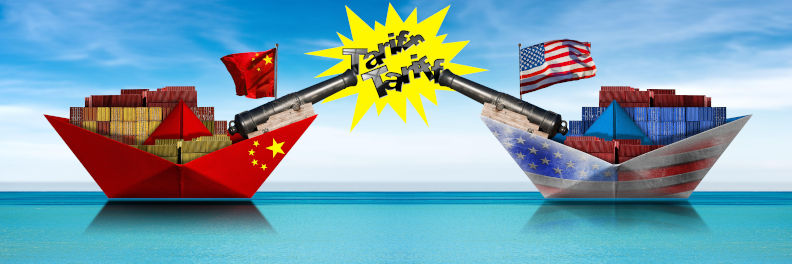Just not in time
May 5, 2025
Donald Trump’s tariffs and before-the-border barriers are a de facto self-imposed naval blockade of America that undermines the modern just-in-time economy.
In the world pre-COVID, logistic chains developed to satisfy the “just-in-time” approach to inventory control, manufacturing and consumer supply. Initially, the COVID disruption changed that, but the development of friend-shoring soon restored the concept. Supply and logistics chains adjusted, enabling the continual uninterrupted transit of goods from toasters to cars and everything in between.
The smug satisfaction around friend-shoring has been smashed by Trump’s tariff and non-tariff actions. The combination is rapidly destroying the “just-in-time” inventory model. This has immediate consequences for the US, but its effects also flow through to the global economy.
Tariffs, as everybody apart from Trump and his trade adviser Peter Navarro know, inflate the price of goods, and also the cost of industrial and manufacturing inputs. Even if it is made in America, a product, such as the iPhone, relies heavily on components and production tools sourced from China. Tariff costs are passed on, quickly making some business operations unviable.
Stores in the Toys-R-US model are the first casualties. Walmart and other big box retailers move quickly into the firing line.
Torsten Slock, chief economist of Apollo, predicted the US may suffer “empty shelves in US stores in a few weeks and COVID-like shortages for consumers and for firms”, as reported in The Wall Street Journal.
Eugene Seroka, chief executive of the Port of Los Angeles, recently announced that by mid-May arrivals would drop by 35% as essentially all shipments out of China for major retailers and manufacturers would have ceased, and cargo coming out of Southeast Asia locations is much softer than normal.
The drop isn’t speculative, as Slok points out that a collapse in container ship count and tonnage from China has already happened. Shipping company Hapag-Lloyd similarly reports that container bookings from China to the US are down by a third.
As a result of this policy approach, at the end of April not a single international cargo ship was docked at the port of Seattle, one of the most important ports for US commerce with Asia.
It is estimated that the last ship from China will dock on the East coast around 10 May.
But here’s the rub. It’s not just businesses that do direct business with China that are in the firing line. Trump has also proposed landing fees on ships built in China, irrespective of the source of cargo they carry. The objective is to revive the US ship-building industry.
Under a plan put forward by the US Trade Representative, all Chinese-built and owned ships docking in the US would be subject to levies based on the volume of goods aboard.
The impost covers goods carried from Europe, South Korea and elsewhere outside of China that are carried by COSCO or SITC. The objective is to destroy China’s capacity to export anything to the US, even if the cargoes are not directly from China.
It appears the levy impost also includes cargoes carried on ships built in China like those operated by Danish shipper Maersk and others. It is consistent with the objective of rebuilding America’s ship-building industry.
The disruption to supply chains is already as significant as that experienced during COVID. This is just the beginning as Trump’s imposts on both Chinese shipping, and those who use China-built ships to transport goods, begins to bite.
There are not enough non-Chinese built ships to replace the number to maintain the required shipping of non-Chinese goods to the US. A revived US ship-building industry is at least a decade away.
Already major American chains are reporting shelf shortages, not just of goods made in China, but of products from Europe and elsewhere that would normally have been shipped in containers travelling on Chinese-built ships. The consequence will be empty shelves in US stores in a few weeks and COVID-like shortages for consumers and for firms using Chinese products as intermediate goods.
Inventory delivery from around the world is suddenly no longer “just-in-time”. As with COVID, there is little prospect of a rapid substitution in supply components or logistics chains.
Businesses need to prepare contingency responses that extend beyond the idea that it is only their direct business with China that is affected by tariffs and Trump’s anti-China policies.
The collateral damage is much broader than just the Australia-China trade because it captures every item shipped on a Chinese-built, or Chinese-owned ship. Pause and read that sentence again and consider the impact on bulk material and commodity shipping to the US.
The broad impact has to be acknowledged before business can take appropriate action to protect supply chains and logistics channels.
The self-imposed before-the-border barrier perversely has the same impact as a naval blockade of America. It will also affect the US economy resulting in shortages, inflation and a crippling of industry. There are significant consequences for those superannuation funds which have invested heavily in the US.
Like much of Trump’s policy, the tariff and levy approach echoes the unnamed American Major, reported by journalist Peter Arnettremark during the Vietnam War, who said it was necessary “to destroy the village to save it”. If nothing else, it has destroyed the modern industry foundation of “just-in-time” inventory management.
